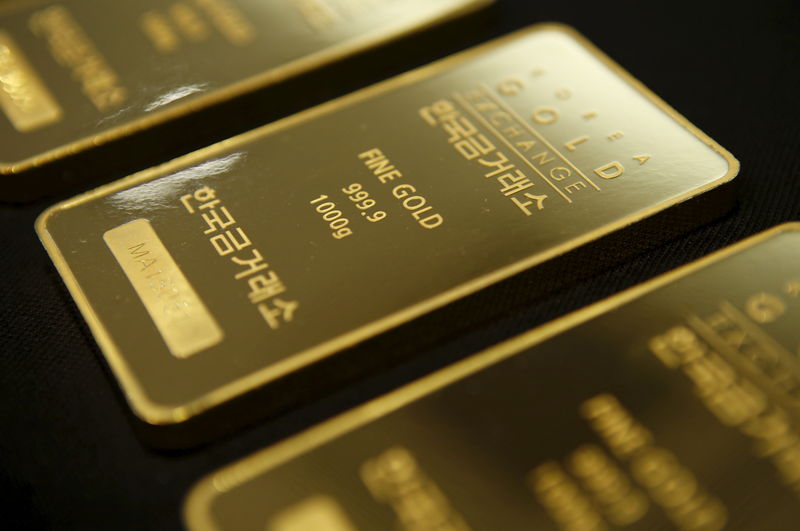Investing.com– Gold prices moved little in Asian trade on Tuesday, remaining within sight of record highs as uncertainty over the global economy and some bets on early interest rate cuts drove a sharp melt-up in bullion.
But the rally now appeared to have paused before more signals on the U.S. economy, particularly from comments from the Federal Reserve and key labor market data due later in the week.
rose 0.2% to $2,118.59 an ounce, while expiring in April steadied near $2,126.75 an ounce by 00:40 ET (05:40 GMT). Both instruments settled above $2,100 an ounce for the first time ever on Monday, and were now close to record highs of $2,135.72 an ounce for spot and $2,130.20 an ounce for futures.
Demand for the yellow metal was boosted by some indicators that the U.S. economy was cooling, while signs of a recession in Europe and Japan, coupled with underwhelming growth forecasts from China, also factored into safe haven demand.
Powell testimony, payrolls data adds air of caution
But further gains in gold were held back by anticipation of more cues on U.S. interest rates, particularly from Fed Chair Jerome Powell this week.
Powell is set to on Wednesday, with analysts expecting the Fed Chair to largely maintain his hawkish rhetoric.
After Powell, data on Friday is expected to provide more cues on the labor market, which has also been a key consideration for the Fed in adjusting interest rates.
High U.S. interest rates have remained a key risk factor for gold prices, and have limited any trysts by the yellow with record highs. Higher rates pressure gold by increasing the opportunity cost of investing in the yellow metal.
Other precious metals also saw some, albeit fleeting gains this week. fell 0.7% to $896.60 an ounce after briefly clearing the $900 level, while rose 0.2% to $24.040 an ounce.
Copper muted as China’s economic goals underwhelm
Among industrial metals, expiring in May fell 0.1% to $3.8507 a pound.
Prices of the red metal moved little in response to largely underwhelming economic signals from top importer China.
Beijing set a target of 5% for 2024 GDP- the same as 2023, while offering more promises of policy support for the economy. But a lack of clear, concrete measures to support growth inspired little cheer over China.
Separate data also showed that China’s grew less than expected in February, presenting continued weakness in the economy.
Read the full article here




